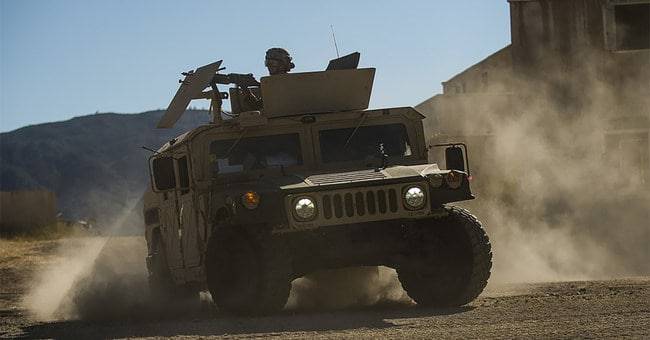Leading Experts Devise Novel Approach to Vehicle Production. Efforts Focused on Manufacturing Process for Reducing Cost, Weight and Production Times While Increasing Survivability. Single, Massive Component Production Will Significantly Enhance Supply Chain Efficiency. Program Contracted Through LIFT, the DoD-Supported Manufacturing Innovation Institute.
The Applied Science & Technology Research Organization, or ASTRO America, today announced it has been selected to manage a new U.S. Army initiative to develop and deliver a hull-scale tool using metal additive manufacturing technology. Known as the “Jointless Hull Project,” the effort aims to provide improved production speeds, reduced production costs, reduced vehicle weight, greater vehicle performance and increased survivability.
“The mission is to develop a large-scale tool capable of producing single, jointless combat vehicle hulls at a near net size of 30ft x 20ft x 12ft in size,” said Larry “LJ” Holmes, Principal Investigator at ASTRO America. “Additive manufacturing at a massive scale holds the potential to transform the way vehicles are built for the military while reducing supply chain fragility.”
The Jointless Hull Project is being contracted through LIFT, the Detroit-based, Department of Defense-supported national manufacturing innovation institute while the Michigan-based U.S. Army Combat Capabilities Development Command Ground Vehicle Systems Center, Ground Vehicle System Center (DEVCOM GVSC) is directing the technical program. The Army’s Rock Island Arsenal – Joint Manufacturing Technology Center is also a key partner on this project and will ultimately serve as the location for the operation of the new additive manufacturing platform. ASTRO America has already kicked off the project with an Industry Day featuring both prospective machine vendors and leading vehicle builders.
Monolithic hulls for combat vehicles have well-established advantages – especially in survivability and weight savings – but traditional manufacturing processes are not cost-effective or adaptable to full production, especially when multiple vehicle platforms are put into play.
Aaron LaLonde, Additive Manufacturing SME, U.S. ARMY – DEVCOM GVSC, and the Army TPOC for the Jointless Hull Project, commented, “Advanced manufacturing methods that are capable of enabling innovative part designs and concepts have tremendous value in achieving part, component and, ultimately, vehicle concepts to provide warfighters and systems with leading performance advantages. This project will scale the benefits of metal additive manufacturing to a size range that will allow the benefits of the technology to be realized on larger system scale parts and enable next-generation vehicle performance.”
This latest award is a testament for the need being met by ASTRO America to correct broader market failures and deliver state-of-the-technology solutions to the end customer to rapidly address warfighter needs.
“This is an ideal project for ASTRO America and its highly experienced team,” said Jason Gorey, ASTRO America’s Executive Director. “This is not a research project for either hardware, software or materials. This is a direct implementation project where we scale existing but advanced methodologies to the required hull-scale size. We will be working with equipment vendors as well as system integrators to deliver on this project.”
“As a national manufacturing innovation institute, we help advance technology from concept to use by the warfighter as quickly as possible,” said Nigel Francis, Chief Executive Officer and Executive Director, LIFT. “Developing the ‘jointless hull’ is also aligned with our mission of driving American manufacturing into the future by connecting materials to processes and to the systems involved.”
Case Western Reserve University researchers teamed up with the U.S. Army and a trio of industry partners to further their signature work in manufacturing approaches for lightweight and high-performance polymeric materials.



